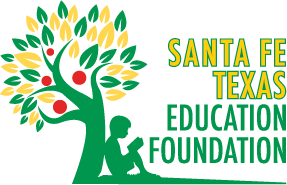
World AIDS Day is observed on December 1 each year. This day is an opportunity for people worldwide to unite against HIV (human immunodeficiency virus). It allows people to show their support for those living with HIV. This day also commemorates those who have lost their lives to AIDS (acquired immune deficiency syndrome) or an AIDS-related illness.
Importance of World AIDS Day
World AIDS Day is a reminder that HIV remains one of the most critical public health issues ever recorded worldwide.
According to UNAIDS, in 2020, about 37.7 million people were living with HIV. Approximately 36.0 million were adults, and about 1.7 million were children (0–14 years). Also, about 6.1 million people did not know that they were living with HIV in 2020. You can download the full version of the UNAIDS Fact Sheet 2021 to view regional statistics, global and regional data. (UNAIDS)
History
Founded in 1988, World AIDS Day was the first-ever global health day. James W. Bunn and Thomas Netter first conceived this day. Bunn and Netter were two public information officers for the Global Program on AIDS at the World Health Organization (WHO) in Switzerland. They took their idea to the Director of the Global Program on AIDS (known today as UNAIDS), Dr. Jonathan Mann. Mann approved the concept and agreed with the recommendation of observing World AIDS Day for the first time on December 1, 1988.
Theme for 2021
All World AIDS Day campaigns focus on a specific theme. The theme is chosen after consultations with UNAIDS, WHO, and several national and international agencies working closely to prevent and treat AIDS. The theme is not limited to just one day. It is used all year-round in global efforts to increase HIV and AIDS awareness within the context of major international events.
The theme for 2021 is ‘End inequalities. End AIDS. End pandemics’. The goal was to end AIDS by 2030. However, the prolonged COVID-19 pandemic and the social and economic crisis threaten the timely achievement of this goal. UNAIDS aims to highlight the critical need to end social, economic, cultural, and legal inequalities to end AIDS by 2030.
The Symbolic Red Ribbon
The red ribbon is the universal symbol of awareness and support for people living with HIV. The idea for the red ribbon came in 1991. Twelve artists gathered in a gallery in East Village in New York to discuss a new HIV awareness project. The artists wanted to create a visual expression of compassion for the people living with HIV since HIV was highly stigmatized at the time.
Their inspiration came from the yellow ribbons tied on trees to support the US military in fighting the Gulf war. They chose the loop design since it was easy to make and replicate. They chose the color red as it represented passion, love and it looked bold. (World AIDS Day, 2021)
What You Can Do
In addition to taking part in awareness-raising activities, you can also wear the red ribbon to show support on and in the run-up to World AIDS Day. Here are some other ways you can help.
Get Tested
Testing is the only way to know if you have HIV. It can also help you understand how to take the necessary precautions to protect yourself from HIV in the future. Encourage family and friends to get tested too. Centers for Disease Control and Prevention (CDC) recommends that everyone between the ages of 13 to 64 gets tested at least once as part of routine health care. (HIV.gov, 2021)
Donate
Donating is a great way to help organizations carry on their life-saving work. Your contribution can make a difference. You can find a national or international organization you’d like to support and help them in their efforts by donating.
Though it’s been more than 45 years since the first reported cases of HIV, it remains a global concern. World AIDS Day reminds us that HIV has not gone away. Let’s work towards increasing awareness, raising money, and improving education, so together we can end the AIDS epidemic by 2030.
Works Cited
UNAIDS. “Global HIV & AIDS Statistics – Fact Sheet.” UNAIDS, www.unaids.org/en/resources/fact-sheet.
World AIDS Day. “The Red Ribbon.” World AIDS Day, 13 Sep. 2021, www.worldaidsday.org/the-red-ribbon/.
HIV.gov. “Who Should Get Tested?” HIV.gov, July 12, 2021, www.hiv.gov/hiv-basics/hiv-testing/learn-about-hiv-testing/who-should-get-tested.
















